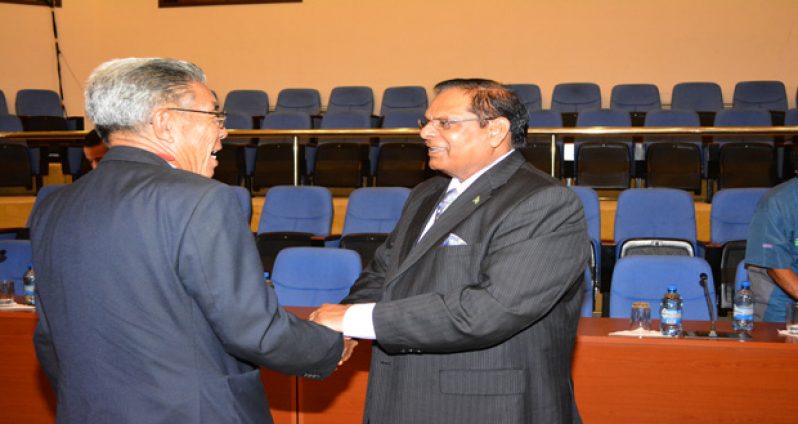A PROJECT that will eventually see the country’s entire national airspace come under surveillance will soon get underway.The announcement was made yesterday by Chitranie Heeralall, Director-General (ag) of the Civil Aviation Authority, at the opening of an aviation conference.
Prime Minister Moses Nagamootoo said the aeronautical surveillance will be done using ADS-B, or Automatic Dependent Surveillance – Broadcast, in which an aircraft determines its position via satellite navigation and periodically broadcasts it to control towers.
Other aircraft can also receive the information, allowing for situational awareness and self-separation. “This technology will track aircraft that fly over our territory, and will aid in search and rescue, as it will provide a closer last-known-position of aircraft that have the requisite on-board equipment,” Nagamootoo said in declaring the aviation conference open.
“This project will continue until complete surveillance coverage of our airspace is accomplished,” he said. Meanwhile, the Prime Minister said that while the government has been reviewing the security sector, during discussions with the relevant agencies of the United Nations, the use of drones was considered.
“This technology, which has come under critical focus in situations of conflict, can be put to use for surveys, research, monitoring of our coastline, and other peaceful purposes; and must be pursued as we continue to advance aviation in Guyana,” the Prime Minister said.
Nagamootoo pointed to the fact that the country’s safety and regulatory oversight capability needs to match the growth of the industry.
“Legislative and regulatory reviews, institutional strengthening and capacity building are areas that must be addressed immediately, and with urgency,” he stated.
Guyana’s level of compliance with the International Civil Aviation Organisation (ICAO) is not on par with the rest of the region, and needs to be urgently addressed, Nagamootoo said, noting that funding is available.
“You know better than I do that this dynamic sector requires one of the highest levels of safety for its sustainability,” he said, in addressing an audience that included industry professionals.
Regarding aircraft accident and incident investigation, Nagamootoo said there is need to strengthen the process of making accident reports available to all stakeholders. He said that information and experience sharing is an important step in the prevention of accidents and incidents.
The Prime Minister said that the government recognises the tremendous potential of the aviation sector for development. It creates a ripple effect in other sectors. “Our hinterland airstrips must once again become the gateways to airlift produce to the coastland and to available and ready markets,” he said, adding:
“The health sector needs similar support when our citizens in the hinterland are in need of better medical services available on the coast.”
Minister within the Ministry of Public Infrastructure, Anette Ferguson, said the aviation sector provides an estimated 3,000 direct jobs, and is responsible for bringing 81 per cent of tourists to Guyana.
She noted that aviation connects coastland and hinterland communities, and supports a variety of activities and sectors, such as agriculture, forestry, mining, tourism and social services.
But despite the importance of the sector to national development, she said, the sector faces numerous challenges, such as a weak regulatory regime; shortage of skilled personnel; underdeveloped search and rescue system; limited international routes and global connectivity; no national airline; and the poor state of hinterland aerodromes.



.jpg)








